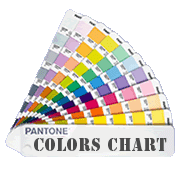The blanket is a key consumable, an intermediary between the graph on the plate and the ink on the paper. Blanket performance is critical to finished results. They have to be able to perform perfect in a demanding environment. Presses have become faster and the range of chemistry used is increasing, including new alternatives to alcohol.
Inks, too, can affect the choice of blanket. Printers must choose the right surface texture for the results they want. The adoption of compressible layers in blankets has also helped reduce smashes.
There are a number of layers to a blanket using fabric, rubber, compressible elements etc. The durability of a blanket varies greatly depending on application, maintenance and sometimes even plain luck but a guideline is one to three million impressions.
Blanket quality has improved over the years. To achieve optimum reproduction quality the printer wants minimum stretch. The tensioning of the blanket is important and there is a correct formula for optimum fit (width between bearers (mm) x 0.06 = the number of Newton metres required). Printers shouldn't use overly aggressive wash up chemistry because this can destroy the surface of the blanket.
When buying a blanket the printer should look at its surface tension, surface roughness, compressibility, ink acceptance and ink transfer behaviour, tone value transfer characteristics, the setting/swelling, release behaviour, hardness and dimensional stability.
Blankets should be stored covered and rolled up in boxes or tubes or laid flat in cool, dark and dust-free conditions. Metal-edged blankets have adhesive tape around their corners, which should not be removed as it prevents the metal bars from scratching the blanket's surface. Clean blankets thoroughly with warm water before first use.























